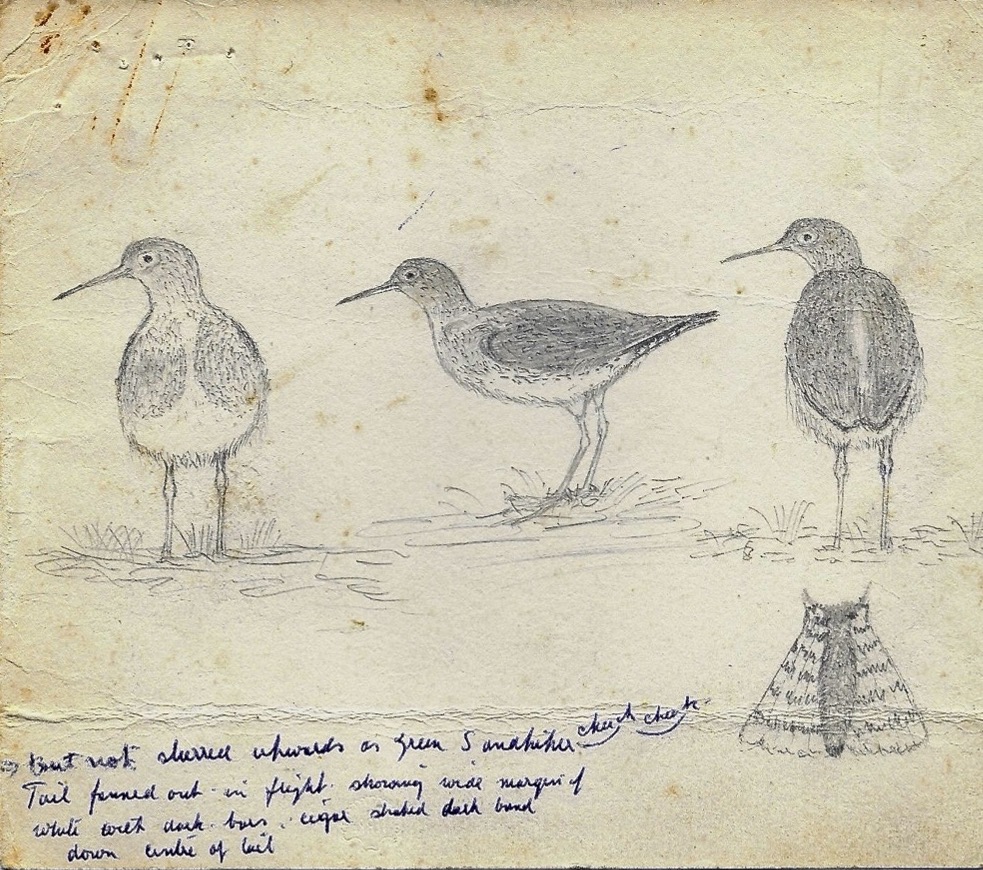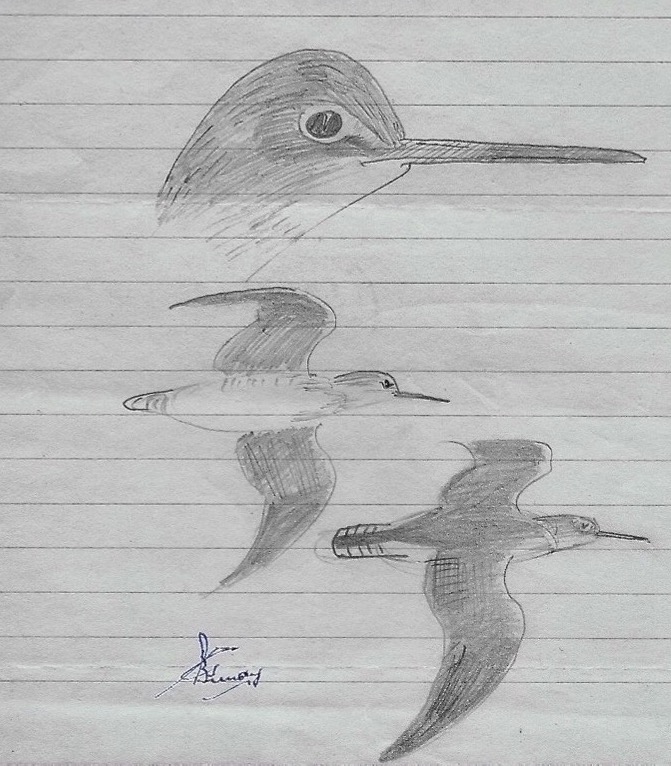Solitary Sandpiper Tringa solitaria


On 10th August 1963, at the Sugar Beet Factory Settling Ponds, Bardney, three Lincolnshire birders had brief views of a Solitary Sandpiper. The bird was present for three days and during that time was seen by several observers. On August 12th an attempt was made to trap the bird, but this was unsuccessful and only served to unsettle it, and it was last seen that evening, calling continuously as it flew over the ponds in semi-darkness. This was only the seventh British record of this American wader which is still an extreme rarity in the UK, with a total of just 32 records accepted, 1950-2020. Nearly 60 years on, this remains the only Lincolnshire record.
| Site | First date | Last date | Count | Notes |
| Bardney Sugar Beet Factory (settling ponds) | 10/08/1963 | 12/08/1963 | 1 |
Finders report: Solitary Sandpiper at Bardney Sugar Beet Ponds, August 10th, 1963, first county record.
by G. Bundy, R. May, and A. D. Townsend
Note: this account is based on the original BBRC submissions (there is quite a file), mainly those from ADT and RM. This was the seventh British record ever, the first was some short time before 1869 (Scotland), with the others being in Isles of Scilly (September 1882); Cornwall (October 1884); Norfolk (August 19442 and September 1947) and Nottinghamshire (August 1962). The first three of these were shot, the last one trapped at Burton Meadows on the Nottingham sewage farm (Naylor, 2023).
Circumstances
A single bird was seen at distances down to 10-15 yd. at 16.00 hr. on August 10th at the Sugar Beet settling ponds, which had dark central tail feathers and the outer tail white barred with dark brown. Later, RM, G. F. Leachman and I were able to identify it as a Solitary Sandpiper, Tringa solitaria. It was present for three days and seen by a number of other local observers.
From the submissions and correspondence relating to this record a variety of optical equipment was used including 7x42 Solaross binoculars; 12x50 binoculars; 40x telescope; 3-inch, 60x Dollond telescope.
Description
General appearance – size and silhouette about as Wood (ADT) or Green Sandpiper (RM), or slightly larger.
Head – forehead and crown medium brown, nape the same but minutely speckled with white; face greyer, chin whitish. An obscure superciliary stripe joined a conspicuous white orbital ring.
Upperparts – mantle and back brownish-grey (ADT) or olive-brown (RM) finely spotted white. Primaries darker brown with a dark area at the carpal joint. Rump and central tail feathers same colour as rest of upperparts; outer tail feathers white with four or more dark bars extending outwards from the dark centre, very noticeable in flight and also when settled (ADT). Tail slightly rounded and fanned out in flight showing the wide margin of white with dark brown bars (RM).
Underparts – breast striated buff or brown and divided down the centre by a pale streak. Flanks sparsely streaked. Belly white. Undertail coverts white barred with brown. Underwing same colour as upperparts.
Bare parts – eyes dark, bill dark olive with black tip to both mandibles; legs appeared dull yellow, or in poor light greenish yellow (RM).
Voice – heard a double call ‘chee-chee’ as loud as a Green Sandpiper; also, a weak ‘chip-chip’, and when flushed suddenly twice it uttered a sharp double call, distinctly metallic ‘click-click’ not unlike Common Crossbill but higher pitched but not slurred upwards as Green Sandpiper.
Behaviour – throughout its stay it remained by a small stagnant pool to which it always returned when flushed. It bobbed like a Redshank by throwing its head backwards, but not like a Common Sandpiper. Moved as Green Sandpiper when feeding, not quickly as Wood Sandpiper, often stood in water for a considerable time picking gnats off the surface around it without moving. Fairly tame and when aware of being watched would run into cover instead if flying but flew away when people passed by talking out of its view. Did not fly high and usually came down like a Snipe within view of the observer. Frequently raised its wings on taking off and alighting. In flight it recalled a Green Sandpiper in that the upper and under surfaces of the uniform brown wings were of the same shade, but it never appeared black-and-white. The outline was more reminiscent of a Wood Sandpiper, but without the projecting feet. Although the primaries were sooty it was essentially a brown-and-white bird. Sometimes pulled worms out of the muddy water in the manner of a Snipe. Ran to cover when a Grey Heron passed over and glanced upwards several times when the heron had gone.
Reference
Naylor, K. A. (2023). Historical Rare Birds <https://www.%20historicalrarebirds.info/>

